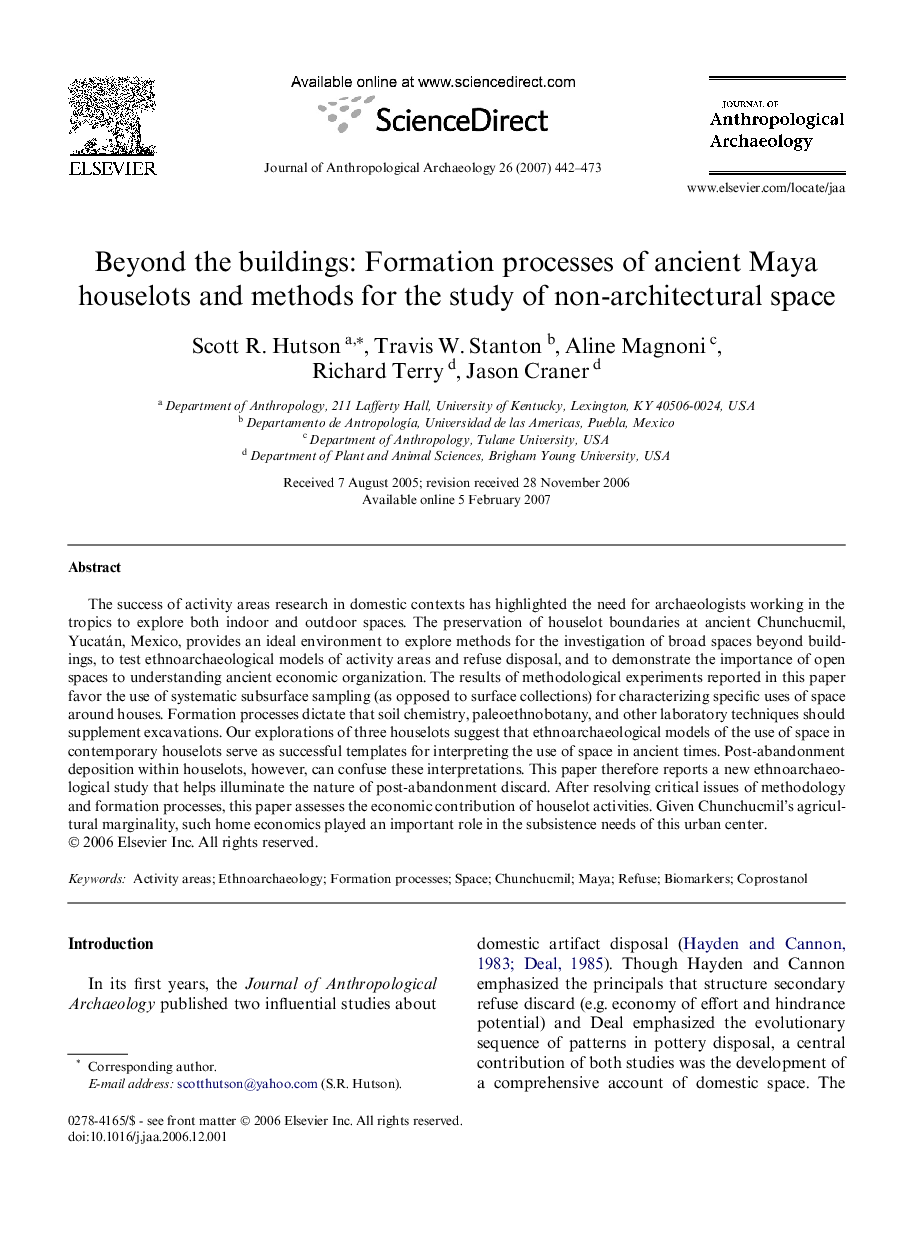| Article ID | Journal | Published Year | Pages | File Type |
|---|---|---|---|---|
| 1035249 | Journal of Anthropological Archaeology | 2007 | 32 Pages |
The success of activity areas research in domestic contexts has highlighted the need for archaeologists working in the tropics to explore both indoor and outdoor spaces. The preservation of houselot boundaries at ancient Chunchucmil, Yucatán, Mexico, provides an ideal environment to explore methods for the investigation of broad spaces beyond buildings, to test ethnoarchaeological models of activity areas and refuse disposal, and to demonstrate the importance of open spaces to understanding ancient economic organization. The results of methodological experiments reported in this paper favor the use of systematic subsurface sampling (as opposed to surface collections) for characterizing specific uses of space around houses. Formation processes dictate that soil chemistry, paleoethnobotany, and other laboratory techniques should supplement excavations. Our explorations of three houselots suggest that ethnoarchaeological models of the use of space in contemporary houselots serve as successful templates for interpreting the use of space in ancient times. Post-abandonment deposition within houselots, however, can confuse these interpretations. This paper therefore reports a new ethnoarchaeological study that helps illuminate the nature of post-abandonment discard. After resolving critical issues of methodology and formation processes, this paper assesses the economic contribution of houselot activities. Given Chunchucmil’s agricultural marginality, such home economics played an important role in the subsistence needs of this urban center.
